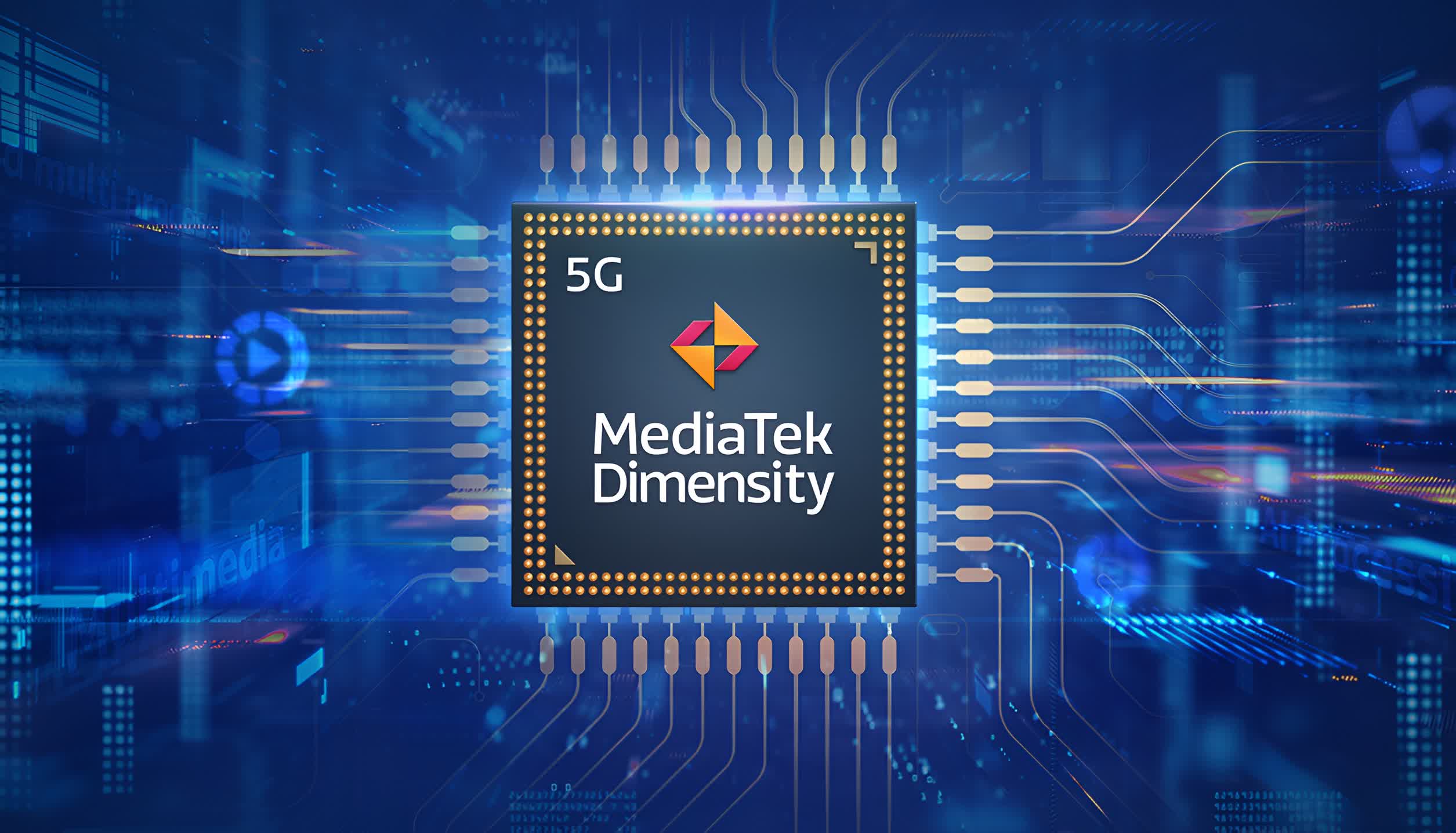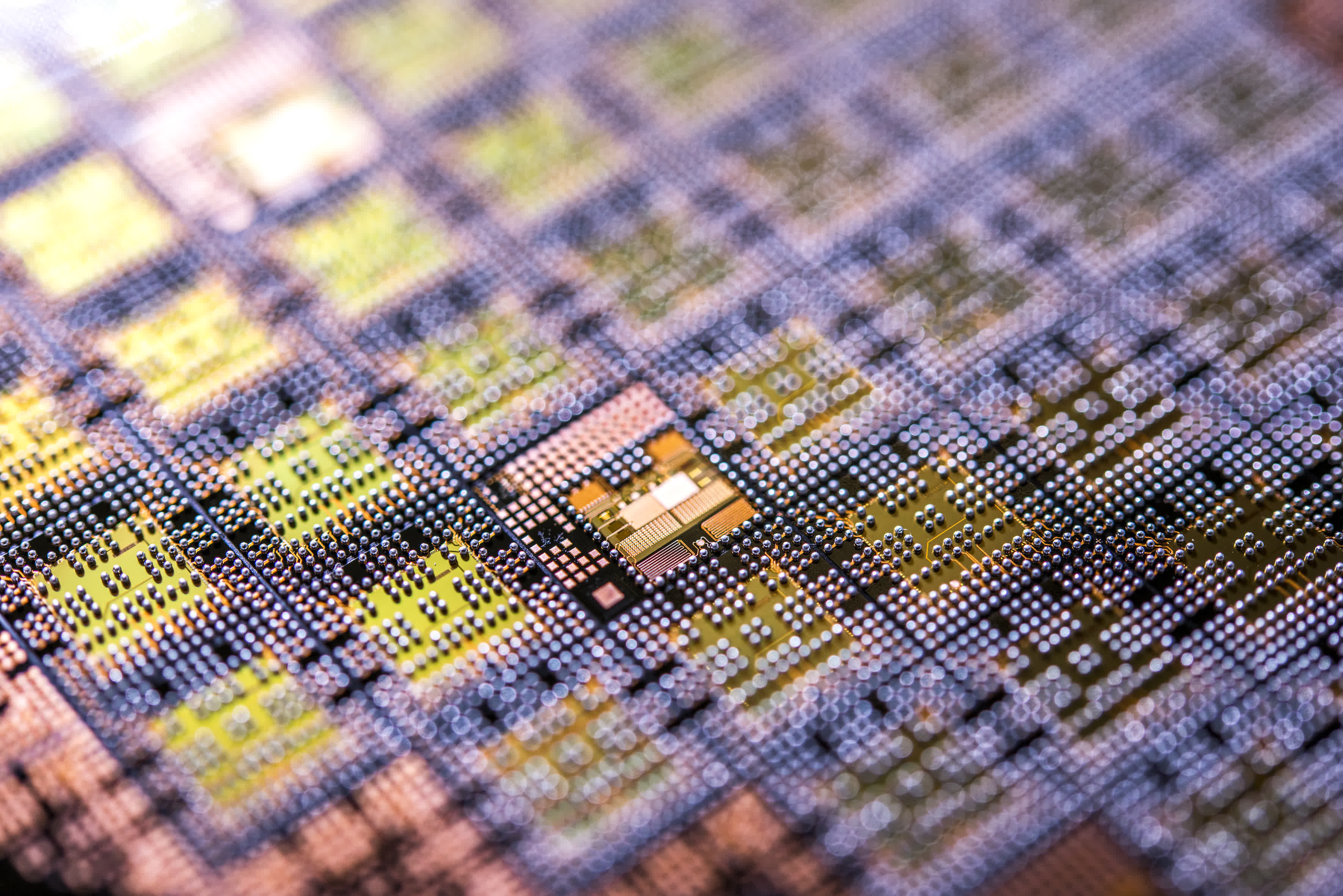In brief: MediaTek is one of the most prominent mobile chipset manufacturers, but its position is being challenged by Qualcomm, especially when it comes to 5G-enabled silicon. The company's latest move is a duo of mid-range Dimensity chips targeted at upper mid-range phones.
Over the last few years, the concept of the affordable flagship has meant fewer bells and whistles and the use of previous-generation Qualcomm Snapdragon high-end chips to meet a lower price point. Examples include the OnePlus 9R, Realme GT2, the Poco F3, and the ZTE Axon 30.
However, MediaTek wants to offer an alternative in the form of proper mid-range chipsets that can compete with Qualcomm's Snapdragon 888 and Snapdragon 870 mobile silicon, at least in terms of performance--Dimensity 8000 and Dimensity 8100 are its solutions. They come with four Arm Cortex-A78 CPU cores clocked at up to 2.85 GHz, four energy-efficient Cortex-A55 cores, and a Mali G610-MC6 GPU.

The two chips are built on TSMC's 5nm process node, and the main difference between them is the clock speed of the CPU, GPU, and NPU. The Dimensity 8000 supports FHD+ displays with a refresh rate of up to 165 Hz, while its bigger brother can handle WQHD+ screens at up to 120 Hz. Both sport MediaTek's Imagiq 780 image signal processor that can handle up to a single 200-megapixel shooter or a triple camera module with two 32-megapixel sensors and one 16-megapixel sensor. It also touts 4K and HDR10+ video capture.
Both chipsets support quad-channel LPDDR5 RAM working at up to 6,400 Mbps and have UFS 3.1 storage. Each integrates a sub-6GHz 5G modem and comes with Wi-Fi 6E and Bluetooth 5.3 standards.
A notable feature that also made its way to the higher-end Dimensity 9000 silicon is support for AV1 hardware-accelerated decoding. A feature that Samsung already added to its Exynos 2200 SoC. Qualcomm also plans to use it in its upcoming Snapdragon 8 Gen2.

MediaTek says its new mid-range mobile chipsets will debut in several phones later this year with price ranges between $400 and $700, starting with Xiaomi's Redmi K50 Pro, the Realme GT Neo 3, and the Oppo K10. The OnePlus Nord 3 might also use one of the new chips, but we know for sure that Xiaomi's Redmi K50 Pro+ will integrate the Dimensity 9000, which is another win for MediaTek.
The Taiwanese company maintains a lead on the smartphone chipset market. Research from CounterPoint analysts indicates MediaTek's market share dipped slightly in Q4 2021 but is still above Samsung's 30 percent share. Qualcomm remains unchallenged in the 5G modem market, but that could easily change once Apple transitions to first-party modems sometime in 2023.
